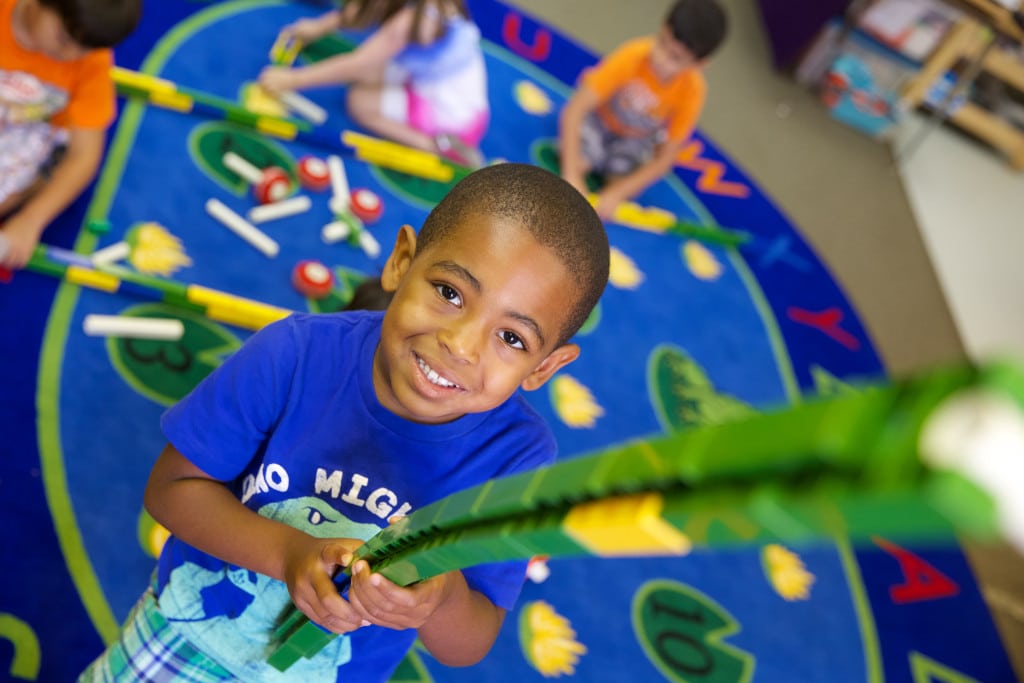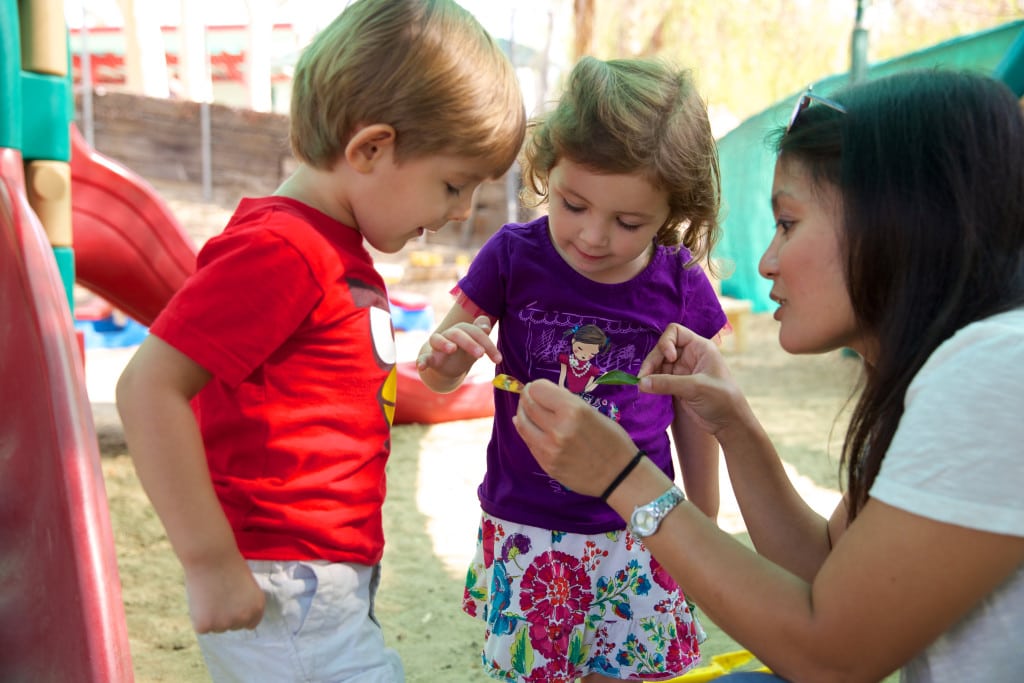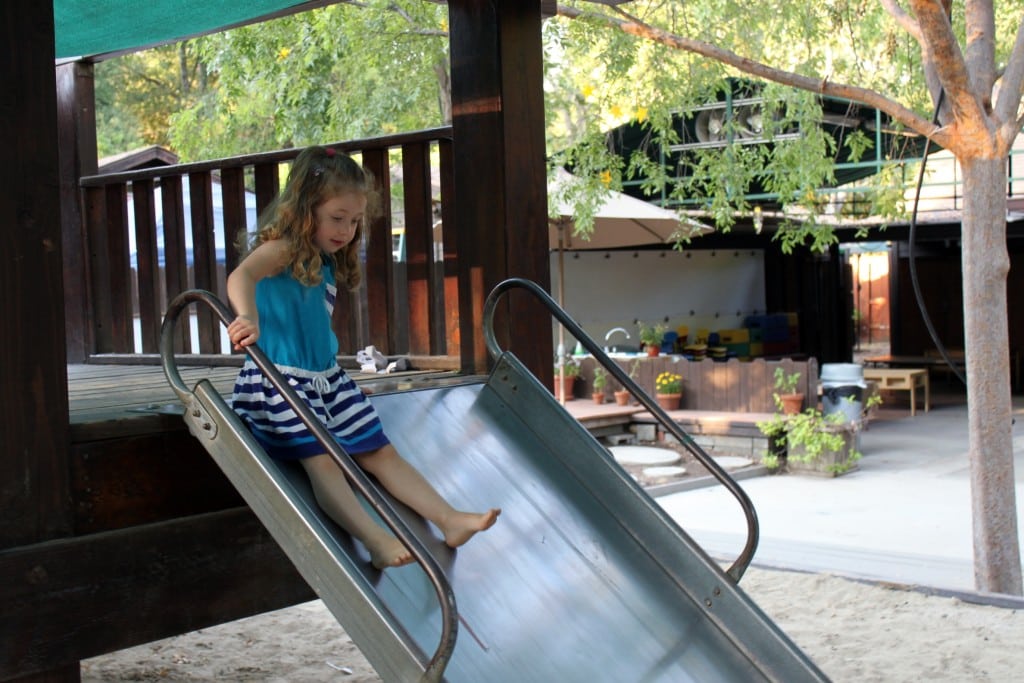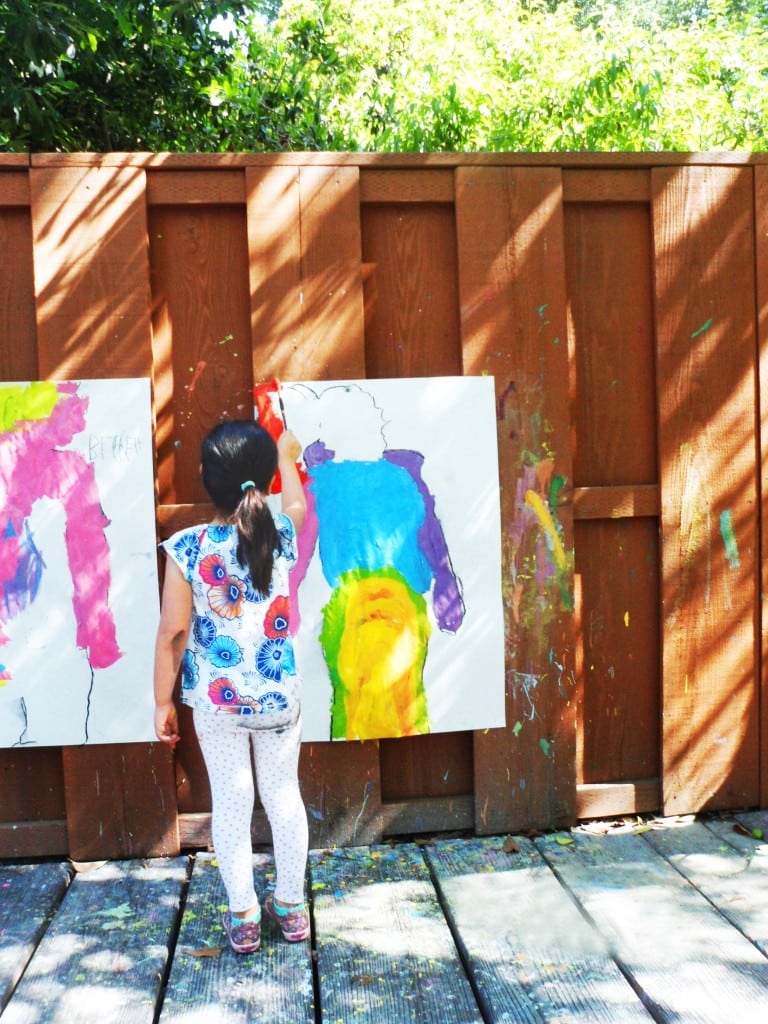
A child-centered preschool is structured around the fact that young children learn best through active play and exploration. PHOTO COURTESY CHATSWORTH HILLS ACADEMY
Extensive research shows that attending preschool helps children develop social and emotional skills, improves their reading and language development, and gives them the opportunity to make decisions and ask questions in a safe environment. Regardless of their socio-economic status, race or location, children who have attended preschool are more likely to graduate high school and attend college, and less likely to repeat a grade, have substance-abuse problems or commit a crime.
It falls to parents to choose which preschool their child will attend – a complicated process that can be far more stressful than one might think. Different schools have different philosophies and styles of teaching. Some emphasize creativity, others focus on preparing children for the rigors of future schooling, and some are simply about teaching the basics in reading, writing and mathematics. Some are highly structured, some have little or no structure.
What makes the decision even more challenging is that it comes when your child is starting to show his or her own style of learning. Not every preschool is a fit for every child and not every child is a fit for every preschool – and you might not know you’ve made the right choice until your child is actually there. Throw into the mix the fact that parents often face competition for coveted spots at the best preschools, and you have a situation that can seem as stressful as trying to get your child into college a dozen years later. A certain amount of perspective is required.
Keeping Things in Perspective
“One father told me it was easier for him to get into Princeton than to go through the preschool admissions process with his child!” says Pam McComas, Ph.D., executive director of Pacific Oaks Children’s School in Pasadena. “While he may have been exaggerating, we do need to make sure we are not taking this more seriously than we need to.”

Teachers who are calm, patient and helpful in their interactions with students create the most child-centered atmosphere. PHOTO COURTESY CHATSWORTH HILLS ACADEMY
Choosing a preschool that aligns with your child’s development is a serious matter, but it can be done in a way that benefits your young learner and doesn’t make you lose your hair from stress. It all comes back to focusing on the best path for your child and your family. A preschool can be the “best” in the world, but if it doesn’t teach in the way that your child will learn, whether it moves too fast or too slow, it’s probably not going to be great for anyone.
What makes a child-centered preschool, then? Why is this an important thing to look for? And with LA preschools seemingly everywhere, how do you even start to find it?
To find a child-centered preschool, it’s helpful to have a good working definition of the term. A child-centered preschool takes advantage of the way children learn – through active, physical play and exploration. And even if your child is a little slower to develop, research shows that an approach that’s social, nurturing and respectful of students benefits all young learners.
“Preschool is not boot camp for elementary school,” says McComas. “A truly child-centered preschool is like an oasis for childhood and may be a last bastion of joyful learning. It respects the fact that young children think and learn differently than older children. Children have a lifetime ahead of them to be told what to do and how to do it. Preschool ought to provide a sense of efficacy and joy.”
Other preschool administrators echo this sentiment. “Any good preschool helps children feel confident,” says Kerry Maguire, director of admissions at Chatsworth Hills Academy. “Good preschools help children feel included and comfortable taking risks – trying new growth experiences that are out of their comfort zone. A good preschool does not ask children to do tasks that are not developmentally appropriate.”
Where To Start

Just touring a school and watching the children at play can help you determine whether it is a good fit for your child. PHOTO COURTESY PACIFIC OAKS CHILDREN’S SCHOOL
To begin the search for a preschool that’s a good fit, engage your natural curiosity – the same way your young learner will. The first question you’ll probably be asking is, “When do I start?”
Experts agree that you want to leave yourself enough time to explore your options and ask questions, but that you don’t need to start before your child is even born. “Parents need to begin looking ahead of time,” says Holly Novick, Head of School at The Country School, an independent day school in North Hollywood. “This could mean a few months or up to a year, depending on your area.”
“Figure out what you are looking for in a program and set parameters that work for your child and your family,” says McComas. “Set flexible criteria regarding type of program, location, cost, sense of community and so on. This will help you feel more sure-footed and less stressed.”
Maguire says that while researching individual schools is important, you’ll have done much of the work already by having an understanding of what works best for your student – and for you. “First, know your family,” she says. “If you value a play-based approach, then find schools that advertise themselves as such. If you want a strong academic focus, then rule out the more progressive programs. Then start asking around for recommendations from family, friends and neighbors.”
Call schools that you’ve got an interest in and sign up for a tour or an informational session. Most schools host an open house, which is a great way to see the school and meet some of the parents. Some schools in high-demand areas have waiting lists, so you’ll want to get started early.
As you visit schools, gather as much information as possible. When you go on tours, make sure to ask questions, observe classes and find out how what the school offers can benefit your child.
Picking Up Clues
When looking at schools, everything about them is a clue – even something as simple as how classrooms are arranged. Young children are active, not passive, learners, so if a classroom is set up to encourage active learning, that’s a good sign that the teacher understands the specific needs of young children – and can nurture them at this critical time.

If your child is inclined to color outside the lines, make sure you choose a school where creativity is valued. PHOTO COURTESY PACIFIC OAKS CHILDREN’S SCHOOL
“When you tour a preschool, you should be able to see whether or not your values are in alignment with those of the school,” says Novick. “It is important that you see your own values being reflected in the preschool where your child will spend his or her time.”
A hugely important part of your student’s preschool experience flows through the teacher. Are they listening and responding to students, or are they going through the motions? Are they overwhelmed and easily frustrated, or do they help children who are struggling and patiently answer their questions?
“Watch the teachers and staff interact with the children, and watch the children interact with one another,” says Maguire. “Do you see the kind of behavior that you want your child to demonstrate and experience? Do the children seem engaged in the activities going on in the classrooms? Is there adequate space for play? Can you imagine your child doing the activities you see happening?”
One clever way to tell if a school is right for your child is how student artwork is displayed. “This is an important clue,” says McComas. “For example, if each child has made a flower picture from pre-cut pieces and they all look pretty much the same, what might that tell you about the program’s support for creativity? Great teachers know that young children need to time to explore and experiment with materials.” If your young child has a love of coloring outside the lines, a school where all the art looks the same will be frustrating to them – and to you.
Once you’ve picked a school and your young learner has started, how will you know you’ve made the right choice? As with everything else in this process, your child will be the guide. If she or he enjoys going to school, is engaged with the learning and eager to go back every day, you know you’ve done well.
Conversely, if it’s not working out, your child will let you know. “If the staff report many issues involving your child, things such as lack of engagement or noncompliance with teacher requests or aggression toward or from other children, you should begin to explore if the school is an appropriate match for your child,” says Maguire.
No matter how good the fit, you can expect some initial tears at drop-off time. Preschool-age children struggle with change and transition, so a little bit of crying doesn’t mean that they don’t want to go to school. It only means that they’re going to miss their parents.
Mike Rothschild is a Pasadena-based writer and father of one.






































